Addis Ababa
- hm
- May 23
- 5 min read
Addis Ababa, the vibrant capital of Ethiopia, is the heart of a nation home to over 126 million people. This high-altitude city is at approximately 2,355 meters (7,726 feet) above sea level — one of the highest capital cities in the world.
From its bustling markets and historic cathedrals to its role as the diplomatic hub of Africa, Addis Ababa offers a compelling glimpse into Ethiopia’s rich cultural mosaic and its growing global influence.
I arrived there in May, and the weather was just right, not too hot or cold.
About an hour drive through the traffic, situated at nearly 3,500 meters or 10,500 feet, Mount Entoto crowns Addis Ababa with sweeping city views and a crisp highland air.
I took a taxi and went over to the Entoto Park — a vibrant blend of nature, culture, and recreation, where visitors can hike, sip Ethiopian coffee, and enjoy sweeping views of the capital.

When I asked locals where to find truly authentic Ethiopian cuisine, the answer was unanimous: Yod Abyssinia. I was intrigued to learn that "Abyssinia" was Ethiopia’s ancient name — a hint that the restaurant offered more than just food; it promised a journey into heritage. My first visit was early in the evening, and I found myself the only guest in a vast, beautifully decorated hall that could easily seat hundreds.
Jet-lagged and unaware, I missed the famous post-8pm cultural show that everyone had raved about. So naturally, I returned — this time after 9pm — and stepped into a world of music, dance, and flavors that made the wait well worth it.

There were multiple performances at Yod, and I saw some of their iconic instruments.
The Masinko, a single-stringed bowed lute held vertically by stage performers, lends a raw, emotional twang to ballads and folk songs. The Krar, a six-stringed lyre played by a seated musician, adds rhythmic warmth and melodic flair. At the center, the standing drummer commands the Kebero, a double-headed drum whose deep, ceremonial beats pulse through every performance. Together, they formed a soundscape that’s rhythmic and hypnotic.
The traditional music and the swirl of dancers in colorful attire was mesmerizing. Each performance showed Ethiopia’s diverse ethnic heritage — from the high-energy shoulder dances of the Amhara to the graceful movements of the Oromo. The restaurant’s interior mirrored the diversity, with themed sections representing different regions of the country.
The women dancers were cheerful, flexible and highly energetic.
Audience could dance with them if they chose. The performances went on for over two hours and there was not a single dull moment.
Ethiopian wines are steadily gaining recognition, and leading the way is Castel Winery in the Rift Valley near Lake Ziway. The winery produces standout varietals like Cabernet Sauvignon, Merlot, Syrah, and Chardonnay — all grown organically on volcanic soil at high altitudes.
The Rift Valley Cabernet Sauvignon shines with notes of green pepper and spice, while the Syrah hints at roasted coffee, and the Chardonnay offers a crisp mix of peach, apricot, and honey. The French winemaking and Ethiopian terroir make for a delightful wine.
Ethiopian Airlines has the domestic skies all to itself — No other airlines are allowed to compete locally, so if you're heading to a town where the roads are more pothole than pavement, the winged route is your best bet. Luckily, flights crisscross this vast country with surprising frequency and affordability — for locals, that is.
Foreign travelers, however, have to open up their wallets. Unless you’ve landed in Ethiopia via Ethiopian Airlines itself, expect domestic fares to be twice the price. Even with the international flight discount, you're still paying double what the locals do. But hey — you’re flying over landscapes that would shake the bolts loose from any road vehicle, so perhaps that premium comes with peace of mind and a better view.
Injera is Ethiopia’s signature flatbread — spongy, slightly tangy, and made from iron-rich teff flour. It’s both plate and utensil, perfect for scooping up the bold, aromatic flavors of Ethiopian stews. At Yod Abyssinia, injera arrives layered beneath sizzling tibs, tender goat meat, and spicy lamb, absorbing juices like a sponge.
Traditionally, injera is stored and transported in an Agelgil — a round, lidded straw container woven with natural fibers and rustic charm. You’ll find these beautiful baskets in homes and markets alike, preserving freshness while echoing Ethiopia’s artisanal heritage.

On the roof of Yod were 10 cartoonish drawings that unfold a dramatic and culturally rich tale that traces the journey of Abagos, a courageous hero who volunteers to slay a dragon terrorizing his people.

After proving the dragon’s death, he is crowned king and introduces Makda, who is later named his heir and becomes queen. As Queen Makda ascends the throne, she sends perfume to King Solomon as a gesture of goodwill and embarks on a diplomatic voyage to meet him.
The series blends myth and monarchy, depicting Ethiopia's past through expressive, symbolic art.
Ethiopia -- the birthplace of coffee -- has a cherished coffee ritual rooted in tradition. The ceremony begins with green beans roasted over an open flame, ground by hand, and brewed in a jebena — a clay pot with a long neck. It’s served in three rounds: Abol, Tona, and Baraka, each deepening conversation and connection.
During this warm gathering, guests enjoy bowls of popcorn, lightly salted and often paired with roasted barley or soft bread — the perfect balance with the bold, aromatic coffee. Dozens or hundreds of the small, handleless sini coffee cups ensure no guest is left out.
The Coffea arabica, is native to Ethiopia, where it grows wild in the highland forests. The country’s unique terroir — high altitudes, volcanic soil, and diverse microclimates — makes it ideal for cultivating complex, aromatic beans.
As I walked the streets, I encountered St. Estifanos Church, also known as St. Stephen’s Church, a striking Orthodox landmark in Addis Ababa. With its grand three-domed entrance and vibrant religious artwork, the church blends modern architecture with spirituality.
Addis Ababa’s skyline is rapidly evolving, with sleek towers rising beside historic churches and buzzing markets. Chic apartments and modern malls reflect a city on the rise. But progress comes with potholes — traffic is notoriously chaotic, with plenty of honking.
Addis Ababa wasn’t just my landing point — it became the place I stayed at twice, threading together unforgettable journeys across Ethiopia. Between the span of three weeks, I wandered through the ancient stones of Aksum, stood in awe of Lalibela’s rock-hewn churches, trekked the surreal landscapes of Danakil, and scaled the dramatic peaks of the Simien Mountains.
Each journey had its own intensity and wonder, and Addis, with its kind people, anchored it all — a vibrant home base in a tapestry of rich, diverse experiences.









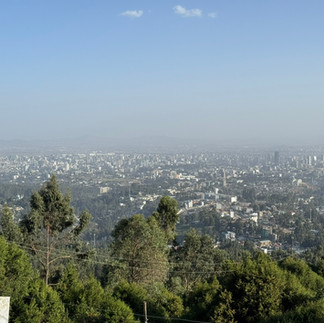

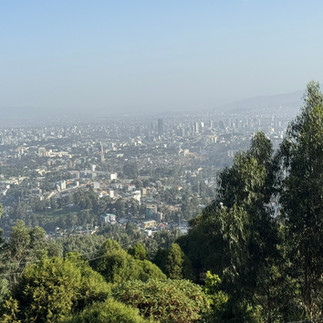





















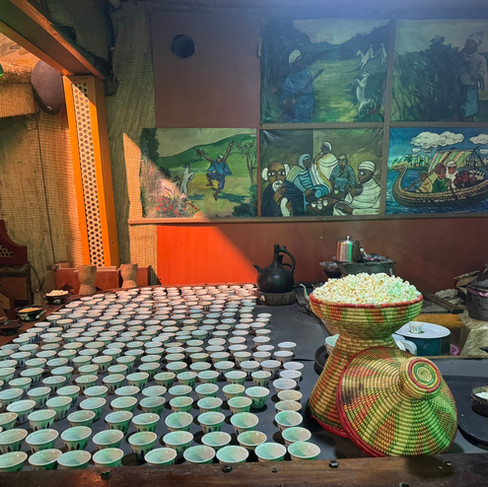

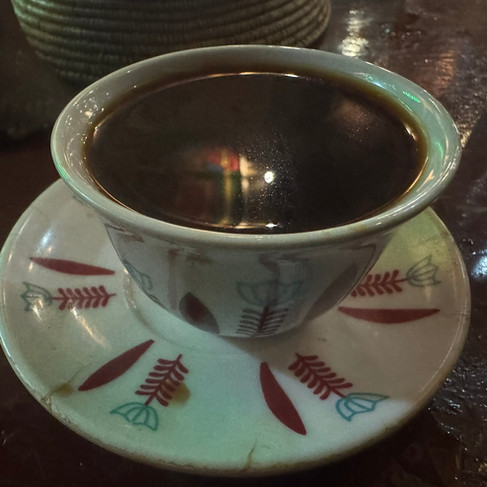







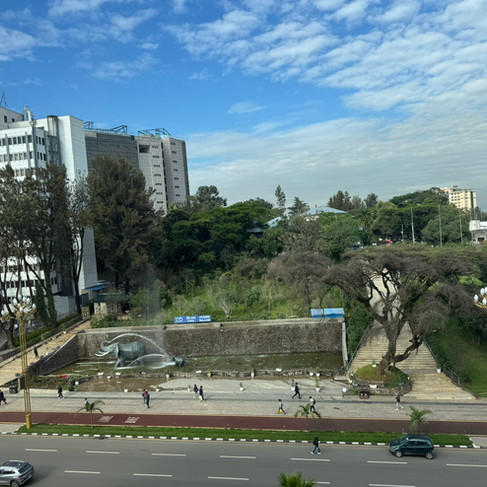

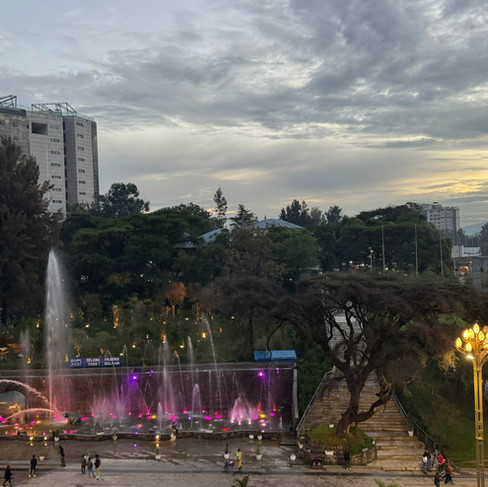





Comments